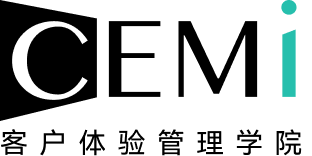本文源引自全球顶级客户服务和体验专家Shep Hyken在2024年2月11日发表的文章,采用中英双语排版,由ImmersiveTranslate提供翻译支持。

Which customer service and CX stats do we need to monitor most closely? I’ve been writing about Net Promoter Score (NPS), Customer Satisfaction (CSAT), Customer Effort Score (CES) and other metrics that should be considered when trying to understand how customers experience the companies and brands they do business with. It’s time to put them together in a list to help you decide which metric is best for you. So, here are 10 customer service and CX metrics you should consider:
我们需要最密切监控哪些客户服务和客户体验统计数据?我一直在撰写有关净推荐值 (NPS)、客户满意度 (CSAT)、客户努力度分数 (CES) 以及在尝试了解客户如何体验与之开展业务的公司和品牌时应考虑的其他指标的文章。是时候将它们放在一个列表中,以帮助您确定哪个指标最适合您。因此,以下是您应该考虑的 10 个客户服务和 CX 指标:
1. Customer Satisfaction (CSAT): This may be the most popular way to measure how satisfied a customer is with your product or service, or any part of the customer experience. It’s a rating scale, typically 1-5 or 1-10.
1. 客户满意度 (CSAT):这可能是衡量客户对您的产品或服务或客户体验的任何部分的满意度的最流行的方法。这是一个评分等级,通常为 1-5 或 1-10。
2. Net Promoter Score (NPS): Fred Reichheld of Bain & Company created one of the most powerful metrics to determine if the customer experience was good enough to garner a recommendation. The standard NPS question is: On a scale of zero to 10, what is the likelihood you would recommend (the company) to a friend, colleague or family member?
2. 净推荐值 (NPS):贝恩公司的 Fred Reichheld 创建了最强大的指标之一,用于确定客户体验是否足以获得推荐。标准 NPS 问题是:按照 0 到 10 的范围,您向朋友、同事或家人推荐(公司)的可能性有多大?
3. Customer Effort Score (CES): While most companies tie CES to customer support, my recommendation is to look at all customer interactions and determine how easy (or hard) it is to do business with you.
3. 客户努力得分 (CES):虽然大多数公司将 CES 与客户支持联系起来,但我的建议是查看所有客户互动,并确定与您开展业务的难易程度。
4. Customer Lifetime Value: Knowing what the average customer is worth can help you make good decisions about how much to invest in customer service and experience or how much to spend to retain your customers.
4. 客户终生价值:了解客户的平均价值可以帮助您做出明智的决定,决定在客户服务和体验上投资多少,或者花多少钱来留住客户。
5. Customer Retention and Customer Churn: These two go side-by-side. Retention measures the percentage of customers who return. Churn measures customers who don’t.
5. 客户保留和客户流失:这两者是并存的。保留率衡量回头客的百分比。流失率衡量的是不这样做的客户。
6. Time Well Spent (TWS): I recently interviewed Aranas Savis, an experience designer at Stone Mantel, whose principals came up with a new way to measure customer satisfaction by asking customers if their time with the company was Time Well Spent.
6. 充分利用时间(TWS):我最近采访了 Stone Mantel 的体验设计师 Aranas Savis,他的负责人提出了一种衡量客户满意度的新方法,即询问客户在公司度过的时间是否充分利用。
7. First Call Resolution (FCR): This plays well next to Customer Effort Score (CES) above. It measures how often a customer can get a question answered or a problem resolved on their first attempt. Ideally, it’s the first time every time!
7. 首次呼叫解决率 (FCR):这与上面的客户努力分数 (CES) 配合得很好。它衡量客户在第一次尝试时获得问题解答或解决问题的频率。理想情况下,每次都是第一次!
8. Average Handle Time (AHT): As the name implies, this is about how long a customer support agent spends “handling” the customer’s issue. Many companies use this to measure an agent’s productivity, and that can be a mistake. If agents know they are graded on how many calls they make, they will hurry the customer off the call, which can cause the customer to feel under-appreciated. If you talk about short AHT and also care about NPS or CSAT, then you’re going to struggle to have strong ratings and reviews.
8. 平均处理时间(AHT):顾名思义,这是关于客户支持代理花费多长时间“处理”客户的问题。许多公司用它来衡量座席的生产力,但这可能是一个错误。如果客服人员知道他们的评分标准是根据拨打的电话次数进行的,他们就会催促客户挂断电话,这可能会导致客户感到自己没有受到重视。如果您谈论短期 AHT 并且还关心 NPS 或 CSAT,那么您将很难获得较高的评级和评论。
9. Average Hold Time (AHT): This is another AHT. Some refer to this as Average Wait Time (AWT), which helps with the confusion between hold time and handle time. Making a customer wait can cause frustration. If the customer was upset or frustrated with the company or its product before the call, how do you think they will feel after being put on hold for an unreasonable period of time? Our customer experience research found that 61% of customers feel companies don’t value their time when they call customer support. The goal is simple: reduce AHT/AWT!
9. 平均保持时间(AHT):这是另一个 AHT。有些人将此称为平均等待时间 (AWT),这有助于消除保持时间和处理时间之间的混淆。让顾客等待可能会让人感到沮丧。如果客户在致电前对公司或其产品感到不安或沮丧,您认为在被无理搁置一段时间后他们会有何感受?我们的客户体验研究发现,61% 的客户认为公司在致电客户支持时不重视他们的时间。目标很简单:减少 AHT/AWT!
10. Time to Happiness: This measures how long it takes a customer to go from unhappy (disappointed, angry, etc.) to being happy. This begins the moment they start to resolve their problem, which could be time spent on a website, interacting with a chatbot, on a phone call (including the hold time), etc. And keep in mind that the customer often doesn’t call the moment they have a problem. While we can’t control that, we must not forget it’s there. Time to Happiness isn’t often considered, but it’s an important way to understand the customer’s journey to resolution from beginning to the end.
10. 幸福时间:衡量顾客从不高兴(失望、生气等)到高兴所需的时间。这从他们开始解决问题的那一刻开始,这可能是花在网站上、与聊天机器人交互、打电话(包括等待时间)等上的时间。请记住,客户通常不会打电话当他们遇到问题的时候。虽然我们无法控制它,但我们绝不能忘记它的存在。获得幸福的时间并不经常被考虑,但它是了解客户从开始到结束的解决过程的重要方法。

